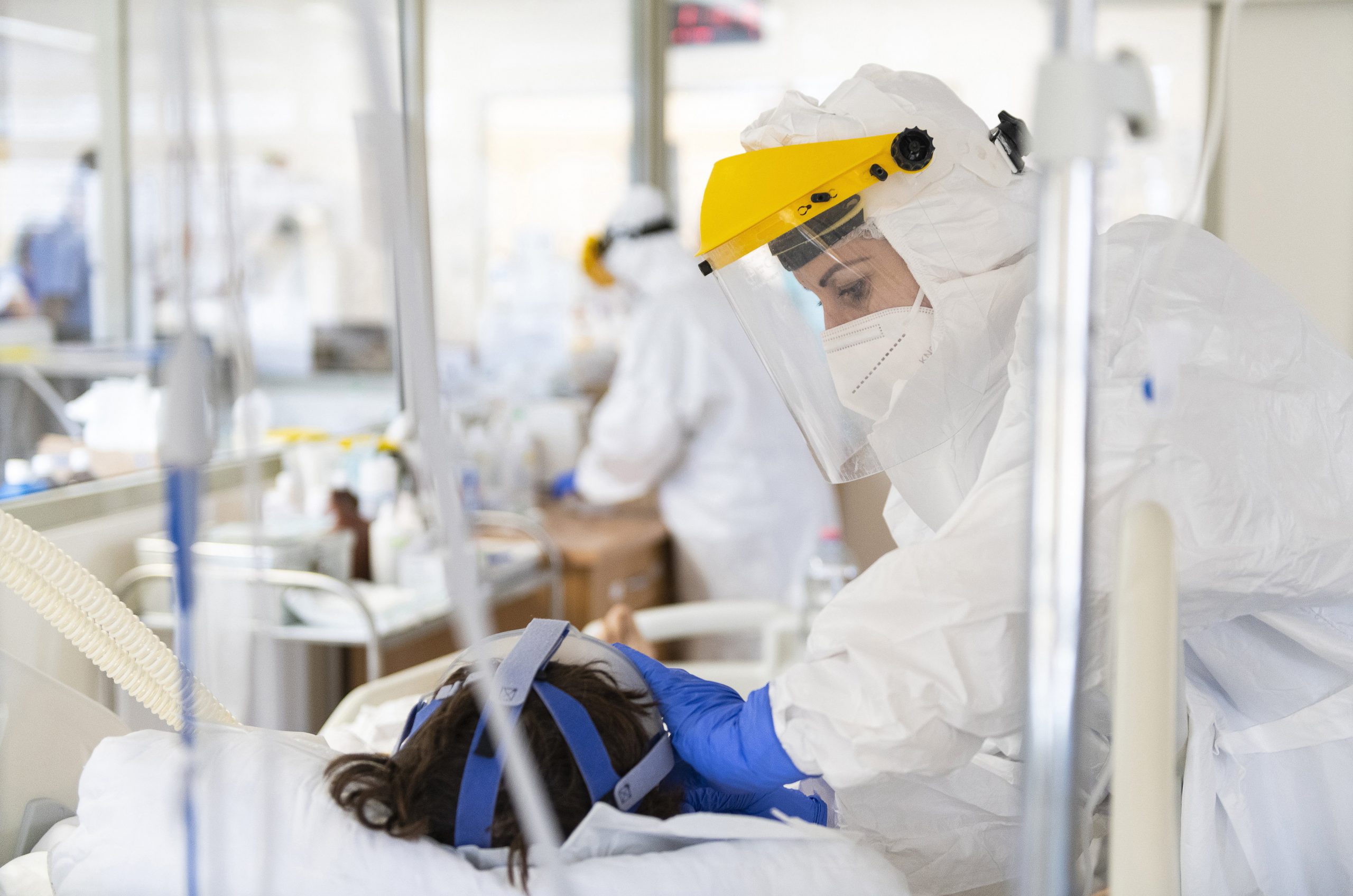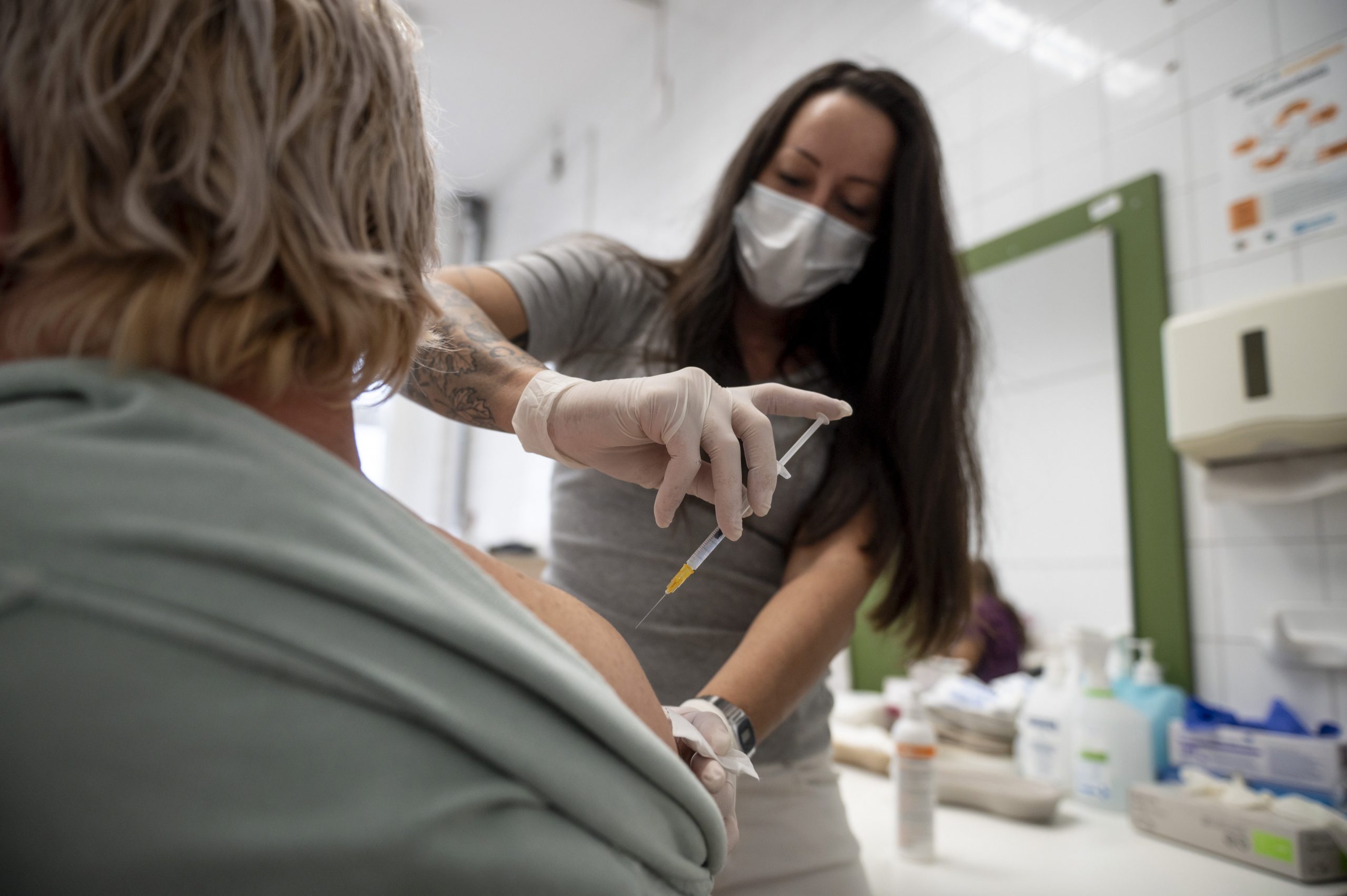
Hospitals are treating 5,811 Covid patients, 545 of whom need respiratory assistance.Continue reading

More than 10 months after the first vaccine was administered in Hungary and just under 9 months after the start of mass vaccination, the number of people who received their first dose has finally exceeded six million. The Hungarian vaccination campaign began as a real success story: for many months Hungary was one of the few countries leading the EU vaccination race. However, this reassuring lead dwindled considerably over the summer, to the extent that the current milestone of 6 million is only enough to place Hungary in the bottom third of the middle on the European vaccination scale.
On Monday, 3,898 people received their first vaccination, bringing the total to 6,003,414 people who have received at least one dose. (Meanwhile 5,777,331 have been fully vaccinated and 1,629,000 Hungarians have received a booster jab). This effectively means that slightly over 62% of the Hungarian population has received at least one dose of the vaccine, while just under 60% are fully inoculated.
Thus, there are still many unvaccinated people, furthermore, their numbers have been consistently stagnating in the past months.
Hungary began the vaccination against Covid-19 on December 26th. Healthcare workers, residents, and staff of nursing homes were the first to receive the jab. Mass vaccination started somewhat later on February 4th. By the very end of March, the number of vaccinated people surpassed two million; exactly a month later it surpassed 4 million, then 5 million on May 22nd. The next milestone came at the beginning of July with 5.5 million people vaccinated.
Unfortunately, the vaccination drive stalled so much so that it took another good four and a half months – just as long as getting to the 4 million milestone – to reach the current figure of 6 million.
It is important to note that the above-mentioned figures all refer to the first vaccine dose, with the percentage of those fully vaccinated being slightly lower than that.
The declining willingness to inoculate can clearly be observed when looking at where Hungary stands in the race of the EU to achieve herd immunity.
Hungary jumped to second place in vaccinations per capita in the EU behind Malta back in March. Today, however, Hungary’s vaccination rate lags behind almost all of Western Europe. Right now, Malta and Portugal are leading with an inoculation rate of 96% and 86% respectively. Meanwhile, Hungary is in the bottom third in the middle on the European scale.
For a long time in Hungary, the number of first vaccinations was particularly important as Prime Minister Viktor Orbán tied his former four-stage vaccination plan and the easing of previously introduced restrictions, to a set number of people who had received their first shot.
This time, however, as Hungary finally exceeds the 6 million mark – at a time when the fourth covid wave is on the rise and mortality is again high in proportion to the population – the government has not introduced any strict measures, despite experts calling for them for months.
Following the complete lifting of restrictions in Hungary during the summer, it was not until November 1st that the government decided to reintroduce some restrictive measures. A mask mandate on public transport, banning visitors in hospitals, and allowing employers to make vaccination compulsory for their employees are the only ones in effect right now.
Looking at the current epidemic data and considering the number of vaccinations, it is a serious question whether these will be enough or whether the Orbán-led government will announce further restrictions in the coming weeks.
Featured photo illustration by Péter Komka/MTI